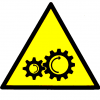Finding Controls in LV executable
-
Similar Content
-
- 1 reply
- 4,041 views
-
- 5 replies
- 3,152 views
-
- 11 replies
- 12,728 views
-
exec System Exec - not possible to recognize program or batch file
By Dawid,
- executable
- labview
- (and 1 more)
- 11 replies
- 16,303 views
-
- 1 reply
- 3,966 views
-





Recommended Posts
Join the conversation
You can post now and register later. If you have an account, sign in now to post with your account.